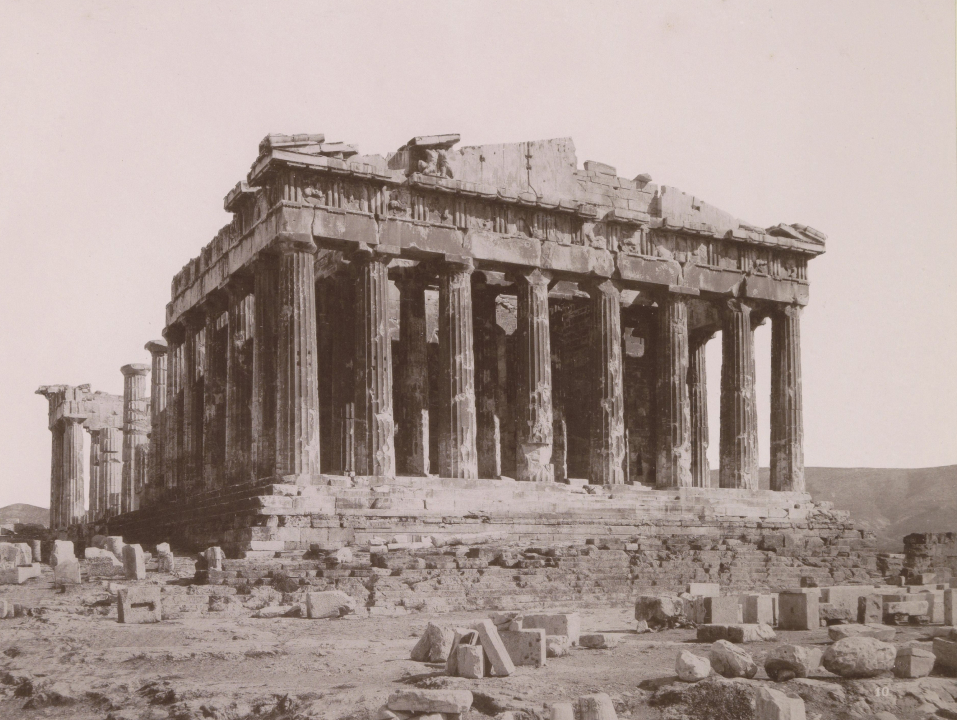The Parthenon, standing majestically atop the Acropolis in Athens, is one of the most iconic monuments of ancient Greek civilization. It has been photographed countless times, but one notable image, “Parthenon on the Acropolis in Athens (West Side)” by Rhomaides Frères, offers a unique and timeless perspective on this classical masterpiece. Taken by the famous Greek photography studio during the late 19th or early 20th century, this photograph captures not only the architectural grandeur of the Parthenon but also the historic and cultural significance it holds for Greece and the world.
The Parthenon: A Symbol of Ancient Greece
Constructed between 447 and 432 BCE, the Parthenon was designed as a temple dedicated to Athena, the patron goddess of Athens. Its construction was part of a larger building project initiated by the Athenian statesman Pericles, who aimed to showcase the wealth, power, and cultural achievements of Athens during its golden age. Built primarily from marble, the Parthenon is a masterpiece of Doric architecture, with some Ionic elements, showcasing the sophistication of ancient Greek engineering and artistry.
The west side of the Parthenon, featured in Rhomaides Frères’ photograph, historically held special significance. This side of the temple is adorned with sculptural representations of the mythical contest between Athena and Poseidon, a symbolic narrative of Athens’ foundation. The friezes, metopes, and pediments that once adorned the Parthenon were highly detailed and tell the story of both gods and humans, highlighting the religious and civic identity of Athens.
The Rhomaides Frères Studio
The Rhomaides Frères, or Rhomaides Brothers, were prominent photographers in Greece, active from the late 19th to the early 20th century. Their studio, based in Athens, became famous for capturing significant cultural landmarks, everyday life in Greece, and historical events. Their work documented a rapidly changing country as it emerged from centuries of Ottoman rule and reconnected with its ancient heritage.
The photograph of the Parthenon by Rhomaides Frères exemplifies the brothers’ skill in combining artistic vision with historical documentation. During this period, photography was not just a form of artistic expression but also a means of preserving Greece’s cultural and architectural legacy, as many ancient monuments were in a state of decay or damage. Their work is credited with helping to raise awareness of the importance of protecting Greece’s ancient heritage.

Leave a Reply